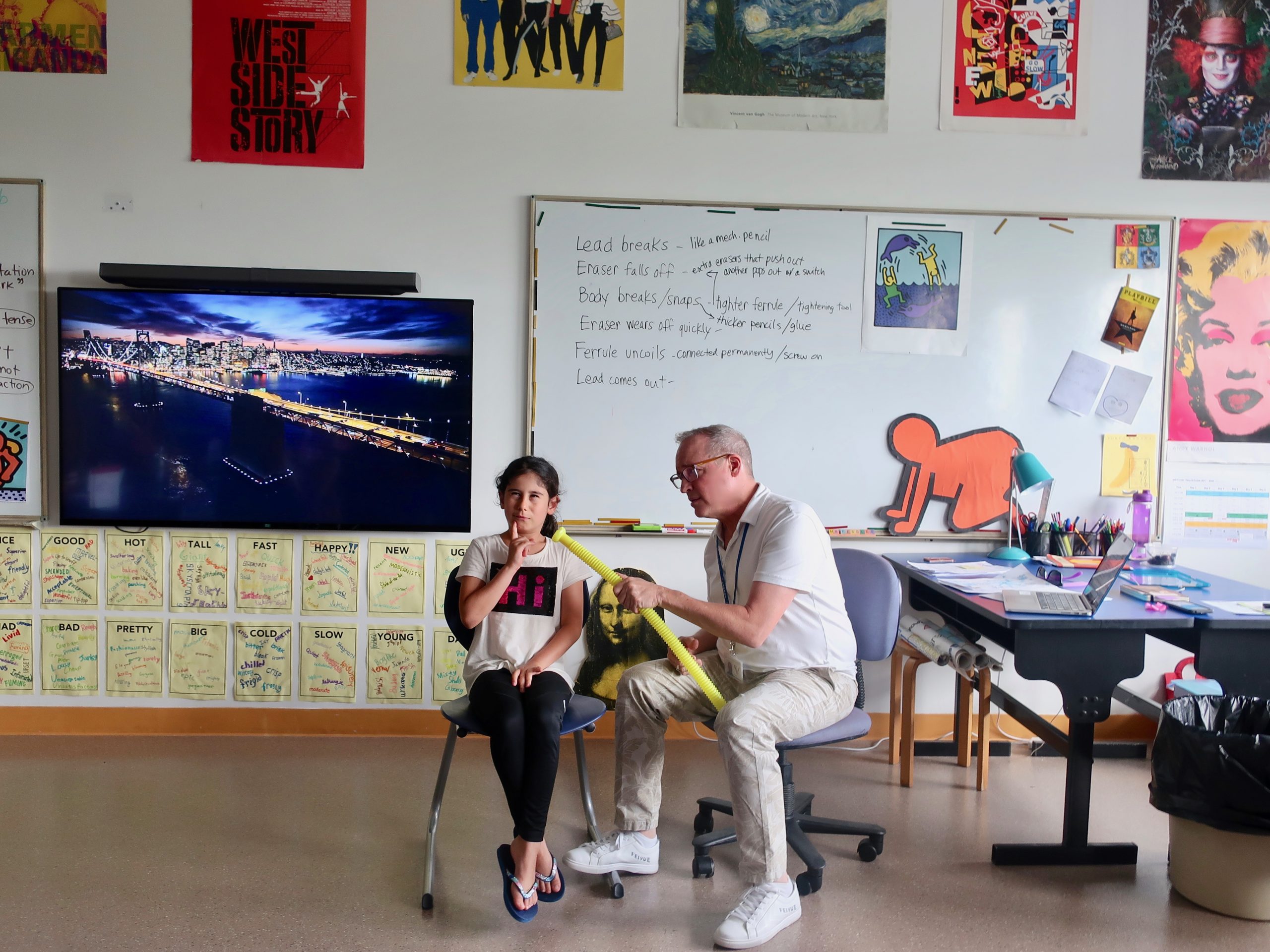When I was nine, I auditioned for a musical and in my first ever role played a bald, evil king in a purple satin robe. I discovered two things: (1) I was passionate about theatre, and (2) not so passionate about wearing a bald cap.
Bald caps aside, I marvel at how that single theatrical experience shaped my future. From that time on I performed in every school production, sang in choirs, was a traveling drama troupe actor during two summers in high school, participated in oratorical contests, and started at the University of Illinois as a theatre major.
And while my winding career path finally led to education, theatre—and the arts—is still at the core of everything I do. It informs my pedagogy, swallows up the bulk of my free time, and reduces my bank account with every expensive theatre ticket I buy (yes, I’m talking to you, Hamilton).
My theatre and education worlds collided when I taught at U.B. Kinsey Elementary School of the Arts. At this unique, public, Title I magnet school in Florida, students participate in the arts as part of their daily routine. My goal was to get my students as motivated about language arts and social studies as they were about dance, theatre, visual arts, and music.
That’s when I discovered arts integration. Defined by The Kennedy Center, it’s a research-based approach to teaching in which students construct and demonstrate understanding through an art form. Students engage in a creative process which connects an art form and another subject area and meets evolving objectives in both. Through research, reading, and professional development by the Kennedy Center’s CETA program (Changing Education Through the Arts), I learned how to bring my passion for the arts into the classroom.
It wasn’t easy. I attempted this during the rise of the accountability movement when everything revolved around prepping kids for the “big test” at year’s end. I minimized (e.g. didn’t use) the many recommended test prep booklets, and instead immersed my students in arts-based instruction. Sure, there were times when I clandestinely imbedded arts integrated elements into the day (at the time I called it my “underground teaching”), but I was convinced it was the right thing to do for my students.
So, to increase reading comprehension, they performed tableaus of key vocabulary or scenes from class novels. They did story dramatization and improv to explore character motivation. They analyzed songs, paintings, and ballets that connected to the themes of the books we read. They wrote scripts for animated shorts to build writing and research skills. They created puppet performances of Harlem Renaissance artists to explore their contributions to American culture. We collaborated with teaching artists and local arts organizations. We sang, danced, acted, filmed, photographed, painted, and drew our way through the standards.
The results were mind-blowing. My students outscored the state average on the “big test.” More importantly, they were confident, motivated, collaborative, and amazing critical thinkers who knew their way around a Monet or Basquiat. That’s why my National Board certification submittal in 2006 was entirely based on arts integration, and why I was selected Palm Beach County Teacher of the Year a few years later.
Eventually I was tapped to manage a $1.2 million grant bringing arts integration practices into district classrooms. It was powerful to share this successful groundbreaking approach with a much wider audience of 13,000 teachers.
I now teach internationally, first in Mali, West Africa and now in Shanghai, China. I’ve continued to hone my arts integration skills, especially valuing the opportunity to incorporate the arts of Mali and China into my instruction. I’ve championed arts integration in presentations on three continents now, because I want educators to realize the countless positive impacts it can have on students.
My own students still show so many benefits—academic and otherwise—through arts integration, which is why it formed the basis of my successful National Board renewal submission in 2015. As with my experience so many years ago, the arts continue to help my students succeed. And they don’t even have to wear a bald cap.
